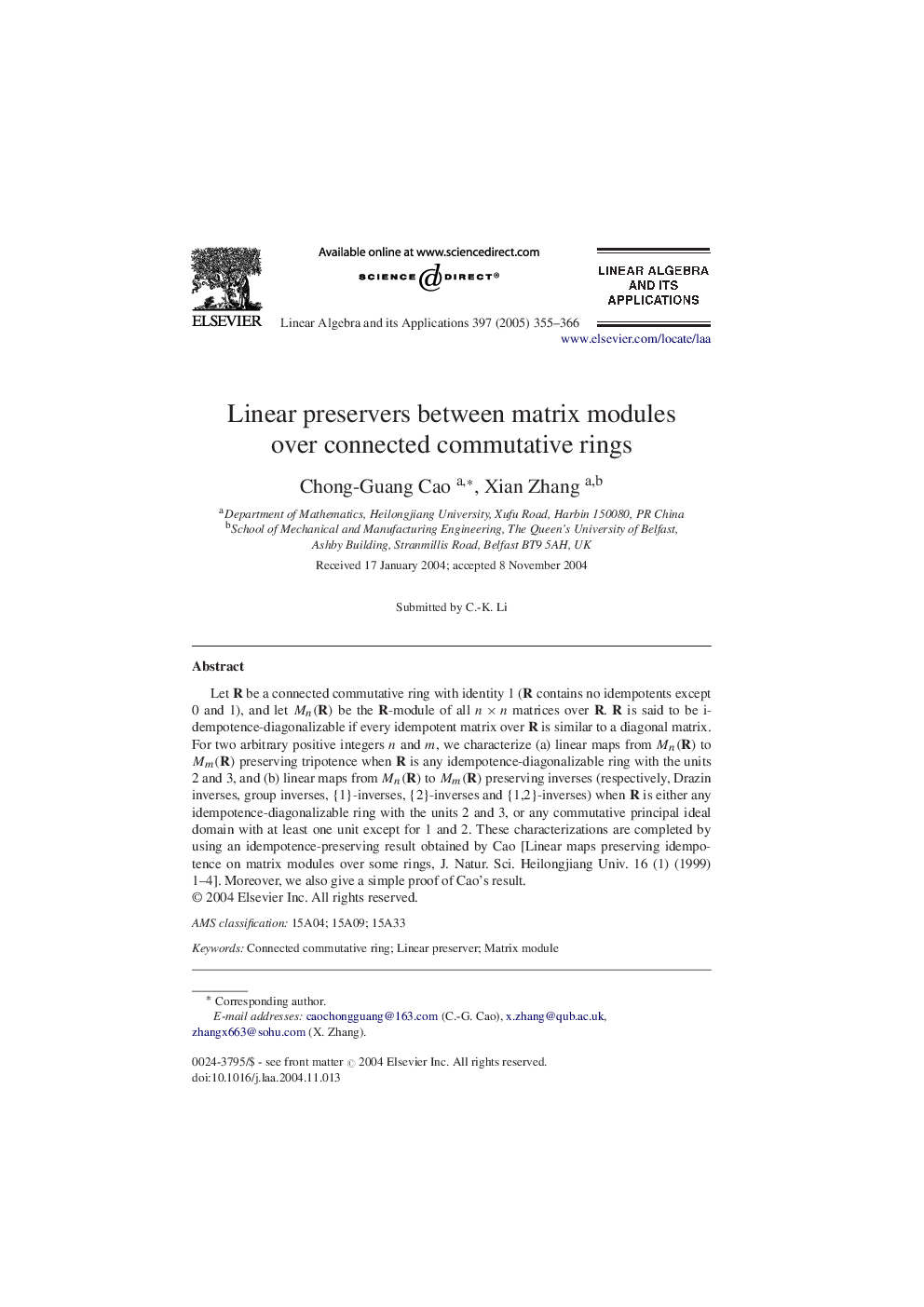| Article ID | Journal | Published Year | Pages | File Type |
|---|---|---|---|---|
| 9498555 | Linear Algebra and its Applications | 2005 | 12 Pages |
Abstract
Let R be a connected commutative ring with identity 1 (R contains no idempotents except 0 and 1), and let Mn(R) be the R-module of all n Ã n matrices over R. R is said to be idempotence-diagonalizable if every idempotent matrix over R is similar to a diagonal matrix. For two arbitrary positive integers n and m, we characterize (a) linear maps from Mn(R) to Mm(R) preserving tripotence when R is any idempotence-diagonalizable ring with the units 2 and 3, and (b) linear maps from Mn(R) to Mm(R) preserving inverses (respectively, Drazin inverses, group inverses, {1}-inverses, {2}-inverses and {1, 2}-inverses) when R is either any idempotence-diagonalizable ring with the units 2 and 3, or any commutative principal ideal domain with at least one unit except for 1 and 2. These characterizations are completed by using an idempotence-preserving result obtained by Cao [Linear maps preserving idempotence on matrix modules over some rings, J. Natur. Sci. Heilongjiang Univ. 16 (1) (1999) 1-4]. Moreover, we also give a simple proof of Cao's result.
Keywords
Related Topics
Physical Sciences and Engineering
Mathematics
Algebra and Number Theory
Authors
Chong-Guang Cao, Xian Zhang,
